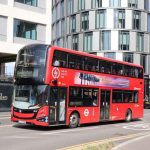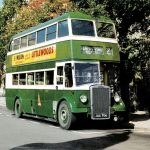2021 will mark the introduction of Clean Air Zones in England, highlighting the importance of future emissions compliance. We examine some solutions
The first Clean Air Zones (CAZs) will launch early this year in Bath and Birmingham. As more cities plan to do the same throughout 2021 and into 2022, operators need to know what driving into emission control zones means for them, and what can be done to meet compliance.

Zero-emission: Set for life
A simple way to ensure compliance is to emit no tailpipe emissions at all.
Pelican Bus and Coach is leading the way in the UK’s zero-emission transport revolution. It has developed solutions for its operators to achieve zero-emission strategies with state-of-the-art vehicles, infrastructure and funding.
Pelican is the UK and Ireland importer for Yutong, which built its first electric vehicle in 1999 and now offers operators one of the most widely proven electric coach and bus designs in existence. “Our integral vehicles, with enhanced battery capacity and market-leading warranties, are a proven, reliable and cost-effective ZE option,” explains Pelican. All vehicles are charged using DC charging, and its ZE range includes a full electric coach, the TCe12, 10.9 metre and 12-metre single-deck buses, and an airside bus.
The TCe12 was the first coach to be certified as an Ultra-Low Emission Bus. As a result, Ember, which began operating two TCe12 coaches on the first ZE scheduled coach service last year, qualifies for the Scottish 30p/kilometre BSOG low-emission vehicle incentive payment.
In addition, operators around the country have chosen Pelican to launch ZE bus fleets using the E10 and E12 offering. “All vehicles were fully completed and commissioned in the UK by our expert engineering team. Training and support for each bus company’s team was also an important part of our offering,” adds Pelican.
Improve fleets with retrofit
HJS Emission Technology provides a valuable contribution to air quality across the UK through its retrofit SCRT exhaust technology. Working with numerous bus operators, fleet managers and vehicle owners it reduces emissions and provides access to CAZs across the UK without incurring charges. HJS describes the SCRT system as a low-cost alternative to replacing vehicles with many years of service remaining. It can be retrofitted to a large range of applications enabling operators to meet Euro VI emission standards. “Vehicles in compliance with these standards can travel freely within the Clean Air Zones and Low Emission Zones being introduced throughout the UK and the Ultra Low Emission Zone already in place in Central London,” the company adds.
Also helping operators achieve Euro VI emissions compliance is Eminox, which points out that the cost-effective option for the majority of operators is to retrofit emissions control technology to existing vehicles. “Fitting an approved exhaust aftertreatment system (EATS) to an older vehicle will provide ULEZ compliance while minimising the investment needed and boosting the value of an operator’s fleet. On average 10-15 vehicles can be retrofitted for the price of buying a new one,” it says.
Tougher emissions standards for London this year make this of particular importance to avoid daily charges. To meet the standards, retrofit EATS must be certified by the government’s Clean Vehicle Retrofit Accreditation Scheme, for which Eminox says it has been first to market with approved systems for coaches, buses and trucks, and has fitted over 7,000 vehicles with solutions backed by full aftersales support.

New powertrains, new requirements
The advent of new powertrains to meet emissions compliance is seeing the industry move faster than it has ever done before in the fields of technology and engineering.
In December, BAE Systems delivered the first plug-in capable electric hybrid propulsion systems to Alexander Dennis to fulfil an order from Ireland’s National for up to 600 Enviro400ERs. The Series-ER system uses an electric motor and generator, the latter charged when the bus is on the move. BAE says it is a way to help operators set up for full electric operation in the future.
The advent of new powertrains has stimulated the growth of an entire industry to support them.
Michael Mitten, CEO of Houghton International, a specialist electro-mechanical engineering company that supports the maintenance of hybrid buses, says: “Electric and hybrid buses are an effective option for operators when aiming to reduce emissions, with many such as the Wrightbus New Routemaster buses operating effectively in cities around the country. While these vehicles offer many additional benefits compared with their fossil fuel counterparts such as reduced emissions and a smoother ride, these newer technology vehicles come with their own challenges for operators – particularly when it comes to the overhaul and maintenance of new, less familiar components, such as traction motors and generators, that are not found on more traditional mass transit vehicles.
“newer technology vehicles come with their own challenges for operators – particularly when it comes to the overhaul and maintenance of new, less familiar components”
“Having run on the roads for a number of years now, many of these vehicles are coming up to major service intervals and operators require specialist support to maintain these key components. Independent of the OEM of the vehicle and equipment, Houghton International works with depot engineers to schedule this maintenance in line with other key components to minimise downtime and interruptions in the daily bus operating schedule and maximise the utilisation of the maintenance facilities.”
Houghton International offers an alternative to fixed OEM service contracts for out of warranty motors, gearboxes and generators. It can reverse engineer key components using 3D scanning technology and its established supply chain to reduce lead times and cost to the operator. Houghton International has also developed bespoke test facilities to ensure motors and generators are tested at full load prior to being fitted back to the vehicles to demonstrate effectiveness and provide additional quality assurance.
“New technology brings new maintenance challenges and we are keen to work with the industry to help address these,” adds Michael. “With over 30 years’ experience in the repair and maintenance of electro-mechanical assets we know motors and generators inside out and can support the transition to, and operation of, lower emission vehicles, improving the performance and extending the life of these critical components.”























